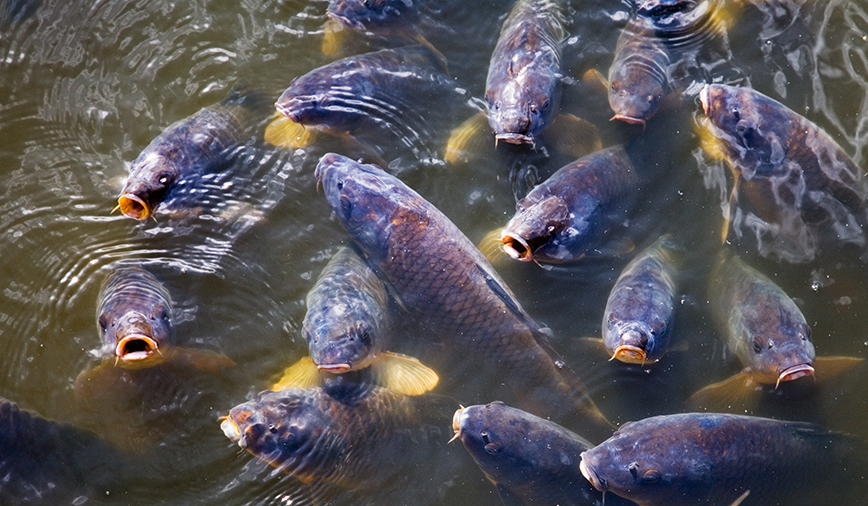Monday was a great day to stroll through the native plant demonstration garden behind Pottawatomie Community Center, take in the spectacular sights and heavenly aromas of springtime blooms…and get completely distracted by carp.
Splish! A dorsal fin breaks the surface. Splash! A big reddish tail flops out of the water. Splish-splash-splish-splash-splish! Heads bump sides, bellies roll upward, and a roiling mass of big brown fish disappears into the turbid water not two feet from shore. What in the world is going on?
In a word, the carp are mating. Or, to be more piscinely proper, we should say they’re spawning. In the carp’s world, it’s time to perpetuate the species. And, man, do they ever!
A mature female carp is capable of producing upwards of 300,000 eggs each breeding season. And she’s not alone in her endeavors. As she cruises through the shallows, she’s typically accompanied by at least four or five males, each eager to pass along their genes, too.
The sight of fins breaking the water’s surface, shark like, is eye catching in and of itself. But then the action really revs up. In what scientists describe as a “conspicuous act,” the males and female thrash about, each releasing their genetic contribution. Fertilization occurs in the water, and the eggs then sink down and adhere to nearby plants and substrate. The eggs hatch in four to five days, and minute carp fry begin their journey down life’s road, er, river.
Only a small percentage of those 300,000 youngsters will make it to adulthood. But that’s enough. The common carp, Cyprinus carpio, is a fish that was introduced to the United States in the late 1800s. Tolerant of warm water, low oxygen levels and even a certain amount of pollution, carp have thrived. In a little over 100 years they have become one of the most widespread fish in the country, as well as in our own Fox River.
The carp’s success, some will say, has come at the expense of our native fish species. If you look at the Fox River watershed as a neighborhood, carp would be the obnoxious family that moves in and drives property values down.
Carp are hard on habitat. They root along the bottom to feed and, in so doing, stir up lots of silt and other particulates. This action, in turn, makes the water murky and hard to see through. Not a big deal for most of us humans but a matter of, literally, life and death for other river residents.
Gamefish like smallmouth bass, northern pike and muskellunge are sight feeders—they hunt using their eyes. But when the water is too muddied, they can’t see; when they can’t see, they can’t hunt. And when they can’t hunt, they can’t eat. You get the picture.
The carp’s habits also tend to reduce light penetration in the water, which makes it hard for aquatic plants to survive. And the silt that is stirred up can bury the eggs of other fish, game and non-game species alike, suffocating them.
Thankfully, the Fox River for now has enough diverse habitat to support a variety of species…including carp. If, in the next week or two, you have the choice of going to see a movie or going for a walk by the river, let me encourage you to pick the latter. Besides getting some exercise and enjoying the fresh air, there’s a good chance you’ll get to witness the carp and their spawning spectacle. Granted, it’s not exactly “Sex and the City”…or is it?
Pam Otto works for the St. Charles Park District and can be reached at potto@stcparks.org or 630-513-4346.

